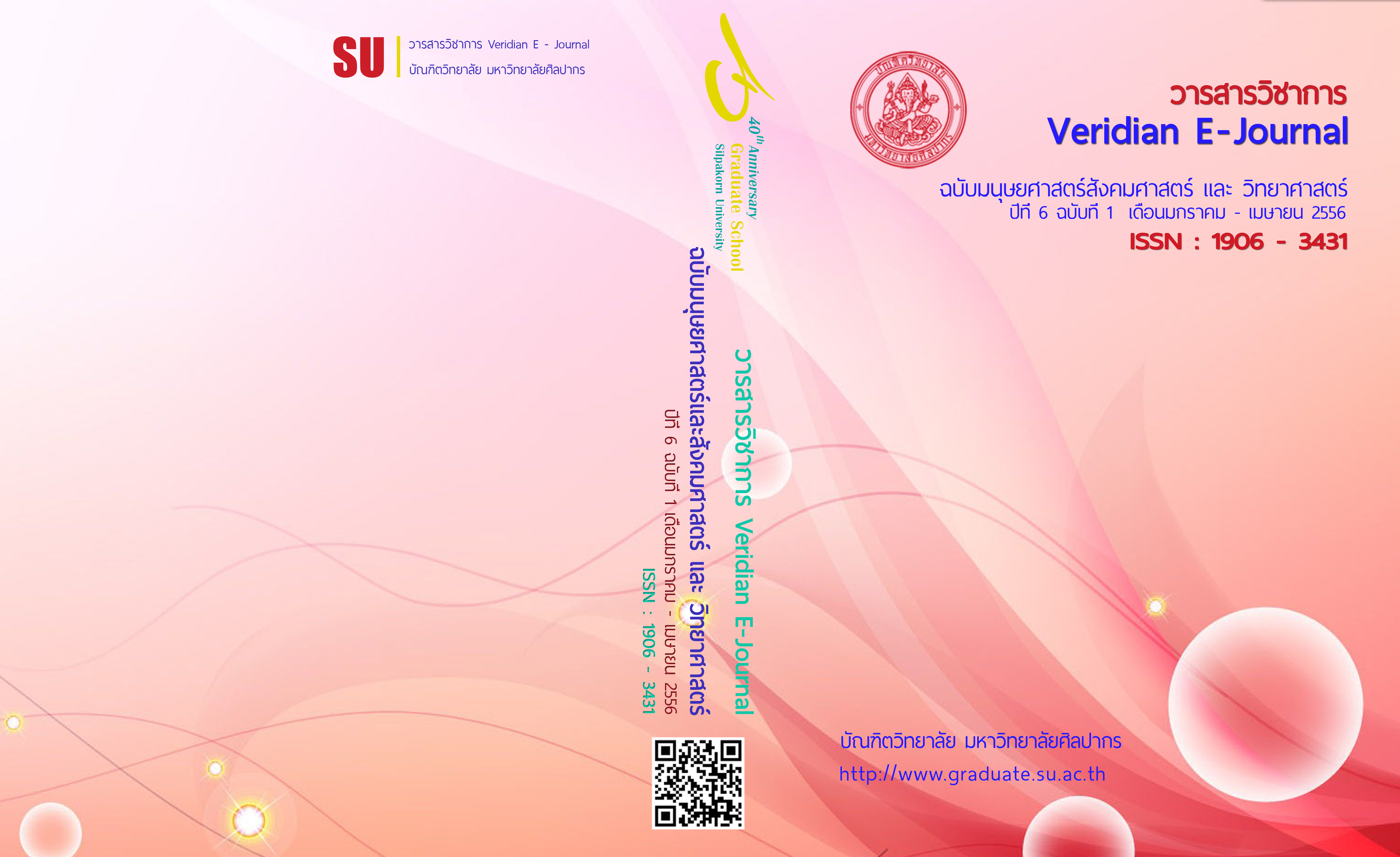การใช้ประโยชน์วัสดุพยุงจากขยะธรรมชาติสำหรับการตรึงเซลล์ และประยุกต์ใช้ในการผลิต เอทานอล
Main Article Content
บทคัดย่อ
บทคัดย่อ
งานวิจัยนี้มีวัตถุประสงค์เพื่อใช้ประโยชน์จากขยะธรรมชาติเป็นวัสดุพยุงสำหรับการตรึงเซลล์ Saccharomyces cerevisiae TISTR 5339 และเพื่อศึกษาความเป็นไปได้ของเซลล์ตรึงสำหรับการผลิต เอทานอล โดยนำขยะธรรมชาติ 4 ชนิด (ธูปฤาษี ซังข้าวโพด ชานอ้อย และขี้เลื่อย) มาบดให้ได้ขนาดประมาณ 2 มิลลิเมตร แล้วใช้เป็นวัสดุพยุงสำหรับการตรึงเซลล์ในการหมักภายใต้สภาวะคงที่ โดยไม่มีการเขย่า ที่อุณหภูมิ 30 องศาเซลเซียส เป็นเวลา 24 ชั่วโมง ผลการทดลองแสดงให้เห็นว่า ชานอ้อยให้การผลิตเอทานอลสูงสุดทั้งก่อนและหลังการแช่วัสดุพยุง โดยมีค่าเท่ากับ 14.86±0.55 และ 17.11±0.25 กรัมต่อลิตร ตามลำดับเมื่อเปรียบเทียบกับวัสดุพยุงที่เหลือ (p< 0.05) จึงเหมาะสำหรับใช้ในการผลิตเอทานอล นอกจากนี้ยังพบว่าวัสดุพยุง ทั้ง 4 ชนิด ปลดปล่อยสารอาหารที่มีผลต่อการเจริญและการผลิตเอทานอลของยีสต์ ผลของการศึกษาในครั้งนี้อาจเป็นทางเลือกหนึ่งสำหรับการผลิตเอทานอลและการใช้ประโยชน์จากขยะทางการเกษตรในอนาคต
Abstract
This study aims to utilize of natural wastes as supporting materials for cell immobilization of Saccharomyces cerevisiae TISTR 5339 and to study the potential of immobilized cells for ethanol production. Four natural wastes (cat-tail, corn cob, bagasse and sawdust) were grounded, sieved to particles size of 2 mm and used as supports for cell immobilization under static fermentation at 30 C for 24 h. The result show that bagasse provided maximum ethanol production at 14.86+0.55 g l-1 and 17.11+0.25 g l-1 in fermentation medium without and with the previous stage of contact between the support And the fermentation medium, respectively, compared with the others (p<0.05) and was suggested as supports for ethanol production. Moreover, it was also found that all supporting materials released nutrients to the medium, which favored yeast development and ethanol production. This approach may serve an alternative technique for ethanol production and utilization of agriculture wastes in the future.

